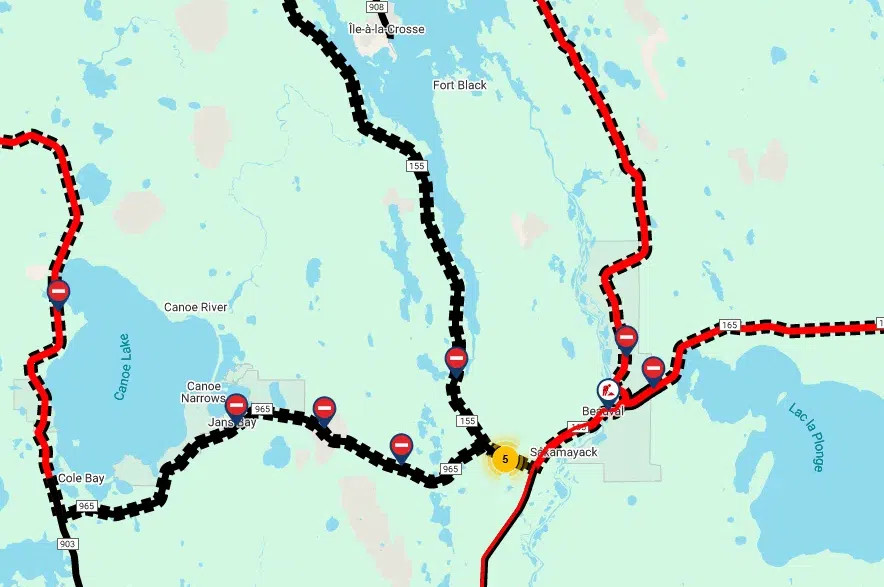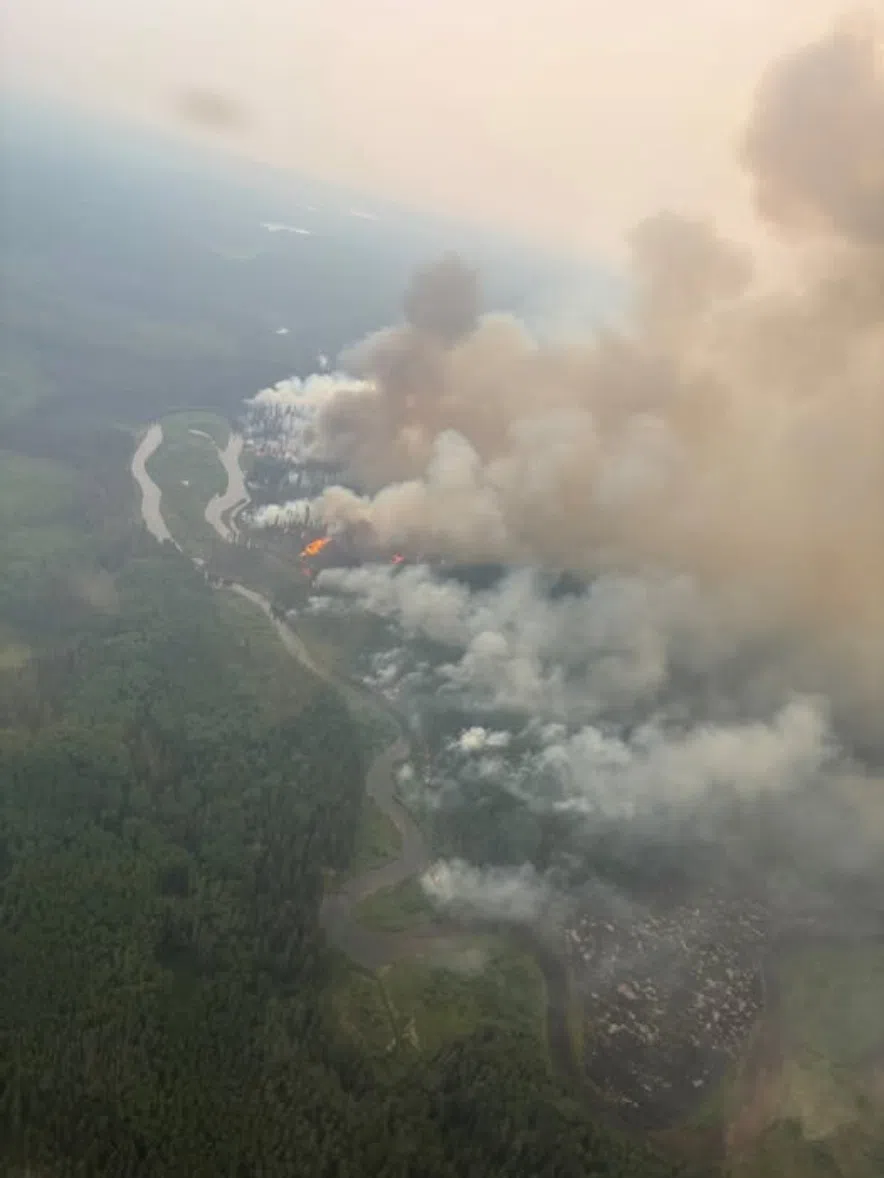Highway 155 connecting northern communities, include La Loche, to the rest of the province has been closed due to the Muskeg Fire.
But travel exceptions are being made, according to the Saskatchewan Public Safety Agency’s (SPSA) Vice-President Steve Roberts, who said that vehicles are being piloted through the highway during a media briefing on Friday.
Read more:
- ‘Getting married no matter what’: Wildfire won’t cancel wedding
- Volunteer firefighters brave Muskeg Fire to save homes in Beauval
- Saskatchewan’s provincial parks celebrate with free entry on Saturday
“Essential supplies can go through but it is not open to public access because of the risk,” he said.
Roberts said the Muskeg Fire burning near Beauval, that has already closed Highway 918 and Highway 165, had spread into the section where the highways join.
“We could have two crews working on the road, or there could be fire and smoke across the road, so (we’re) limiting travel unless it’s essential,” he said.

SPSA Vice President Steve Roberts said most people impacted by Highway 155’s closure can access medical care in Buffalo Narrows or Île-à-la-Crosse (Saskatchewan Highway Hotline)
Although Roberts didn’t provide a timeline on how long Highway 155 would be impacted, he said people can use it for driving to specialized medical appointments.
As long as those people identify what they’re travelling for, Roberts said crews will provide, “a timely, safe way for them to go.”
The Muskeg Fire, first reported on June 28, was listed as not contained and 192,850 ha (nearly 476,543 acres) in size on July 18.
A change in winds forecast
While there are currently 1700 wildfire evacuees in Saskatchewan, and eight communities under partial or full evacuation, this weekend’s wind conditions may be shifting for the better.
Roberts said the province is forecast to get southeast winds, helping clear out smoke and giving crews working on the fires better visibility than they’ve had the last couple of days.
For Waskesiu, which is under pre-evacuation alert because of the Buhl Fire in Prince Albert National Park, low winds have been a major help these last couple of days in keeping the fire from spreading significantly.
“(It) allows anything we drop from the air to be more accurate because there’s less dispersal in low winds,” Roberts said.
It also keeps the fire from travelling across tree tops and allows crews to work around all the edges of the fire, he said.
Now, even more crews are on their way, although they’re a little closer to home.
Roberts said a command team from Ontario, along with crews from Nova Scotia and New Brunswick are coming in the next few days.
With Saskatchewan’s crews working for almost six weeks non-stop, “having more resources is definitely a benefit,” Roberts said.
He talked about the provincial volunteer fire departments that have made a difference in the wildfire efforts but at the end of the day, “we need more boots on the ground.”

The Buhl Fire, first identified on June 29, was caused by a lightning strike and has burned approximately 42,615 ha, 8,470ha within Prince Albert National Park boundaries and 34,146 ha on provincial Crown land. (Parks Canada/Facebook)
Fires in Saskatchewan on July 18
As of 4 p.m. on July 18, there were 51 active wildfires burning in Saskatchewan.
Twelve of those blazes were not contained, with another 18 under ongoing assessment and firefighters were protecting values in 15. Six fires were considered contained.
Contained means suppression action is taking place and the fire is not expected to grow in size, ongoing assessment means the fire is being monitored regularly to assess risk to values in the area and not contained means suppression action is taking place but the fire is expected to grow in size, according to SPSA. Protecting values means a fire is active and action is focused on protecting things like cabins and infrastructure.
So far this year there have been 379 wildfires. The five-year average is 289.
— with files from CJME News
Read more:











